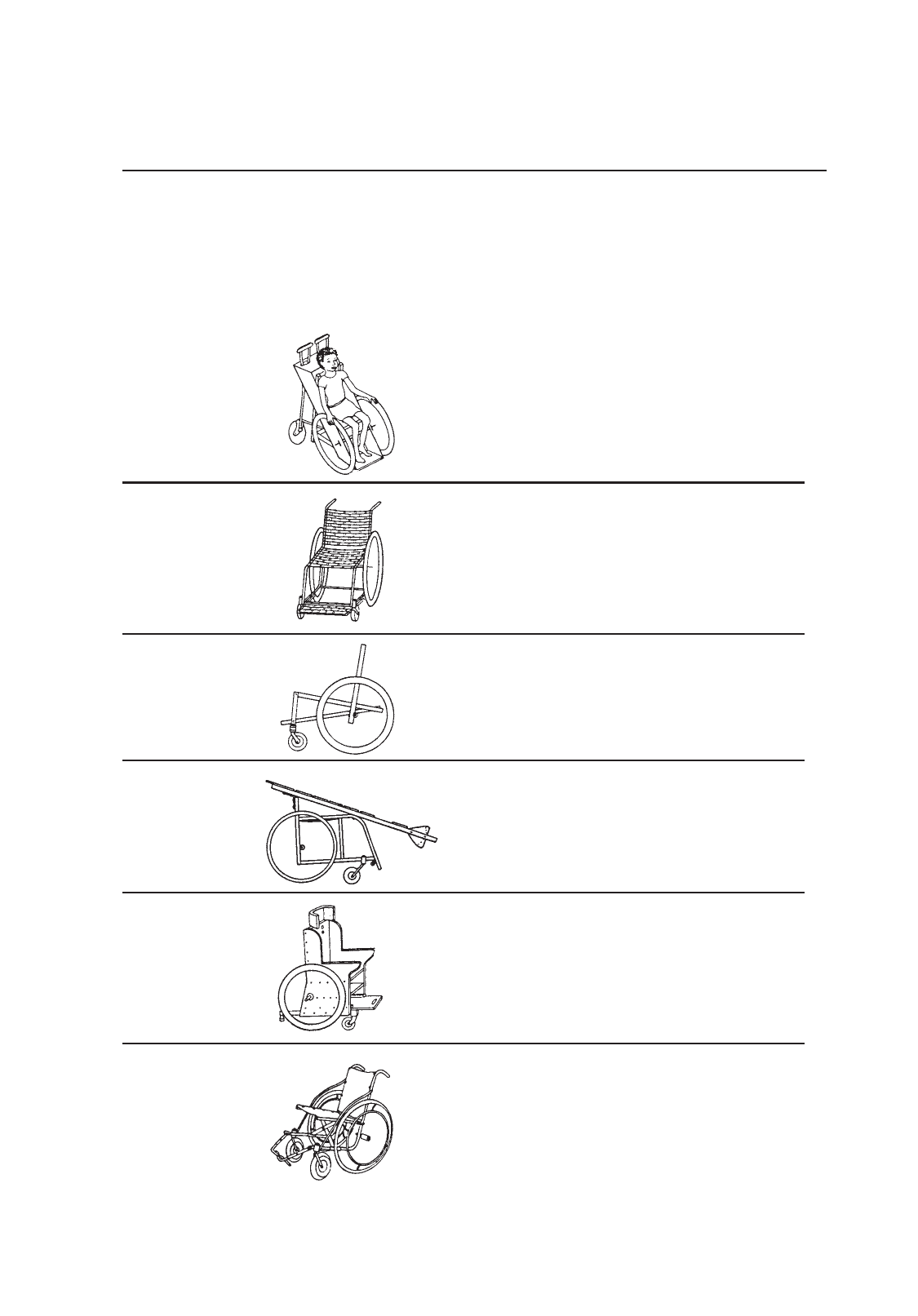
Designs for 6
Basic Wheelchairs
66CHAPTER
613
There are dozens of designs for low-cost, ‘appropriate technology’ wheelchairs.
Some are lower cost and more generally useful than others. In PROJIMO, we have
built many different wheelchairs. In this chapter we give designs for 6 of the ones
that we have found most useful. Each has advantages and disadvantages.
Healthlink
wood wheelchair
made from a
child’s chair,
bicycle wheels
and axles at
front, one
rear caster
Advantages: The simplest and one of the cheapest chairs to
make; easy to modify or adapt; very little welding needed; can
be built in one day by someone with some carpentry skill; low
cost.
Disadvantages: Single, small rear wheel makes it difficult for
either the child or helper to push over rough ground or up curbs.
Fixed footrest makes it hard for child to climb in and out without
tipping chair forward when weight is on footrest. Sideboard
makes transfers to side and lifting child from behind difficult.
Re-bar and woven
plastic wheelchair
steel construction
rod frame with
woven plastic
seat, back, and
footrest
Square metal tube
wheelchair
frame bolted
together
Wheelchair
with lying board
made of steel
tubing, with
removable wood
lying board
Plywood frame
wheelchair
with 20 inch
bicycle wheels
and axles,
and 2 front
casters
Metal tube folding
wheelchair
made from thin-
wall steel tubing;
strong axles
with machinery
bearings
Advantages: Simple design; fairly low-cost re-bar is easy to
bend; plastic woven seat is comfortable and easy to clean;
slide-away footrest makes getting in and out easier.
Disadvantages: Builder needs welding skills; relatively heavy
and not as strong as tubing chairs. Big bumps may bend the
chair out of shape.
Advantages: Strong, stable metal chair that can be built with
nuts and bolts (welding needed only to attach front wheels).
Flat surfaces make it easier to put on wood adaptations; fairly
low cost.
Disadvantages: More work and skill needed than for above
chairs; design more complex; slightly higher cost than wood
chairs.
Advantages: Useful for active child who must lie face down to
heal sores or stretch contractures. When board is removed, it
is regular wheelchair; low cost; very adaptable.
Disadvantages: Requires welding (but a simpler mode can be
made of wood); does not fold; board takes up a lot of space;
stiff ride.
Advantages: Attractive; lightweight; low cost, easy to make
and adapt. Caster wheels in front (not in back) make it easier to
go over rough ground and curbs. Adjustable push-away footrest
makes positioning and getting in and out easy.
Disadvantages: Plywood and double casters increase cost
(although it is still a cheap chair). Plywood (if not marine grade)
may come apart in wet weather. Bicycle axles may bend or
break with a heavy child or rough use.
Advantages: Chair folds for transporting or storage; very
tough; flexible design good for uneven surfaces; good for side
transfers; a very high-quality chair if well-made.
Disadvantages: Needs more skill (tube bending, welding,
wheel spoking, etc.) to build; relatively costly; hard to adapt.